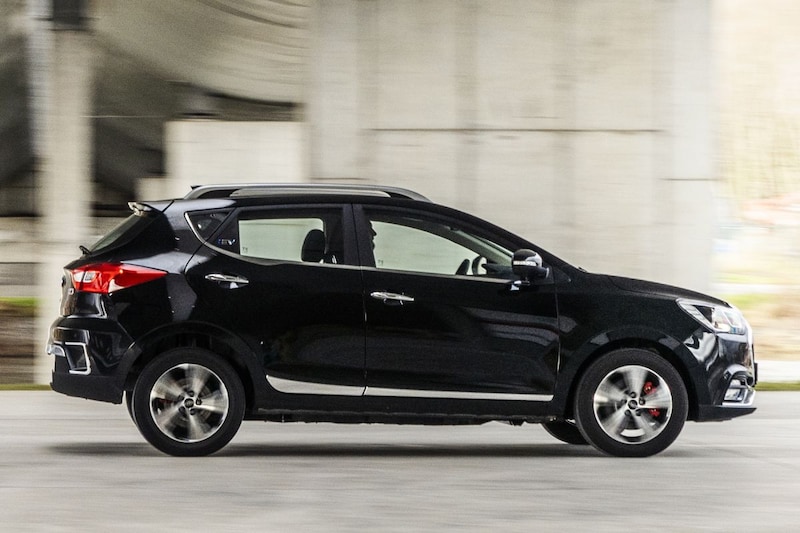
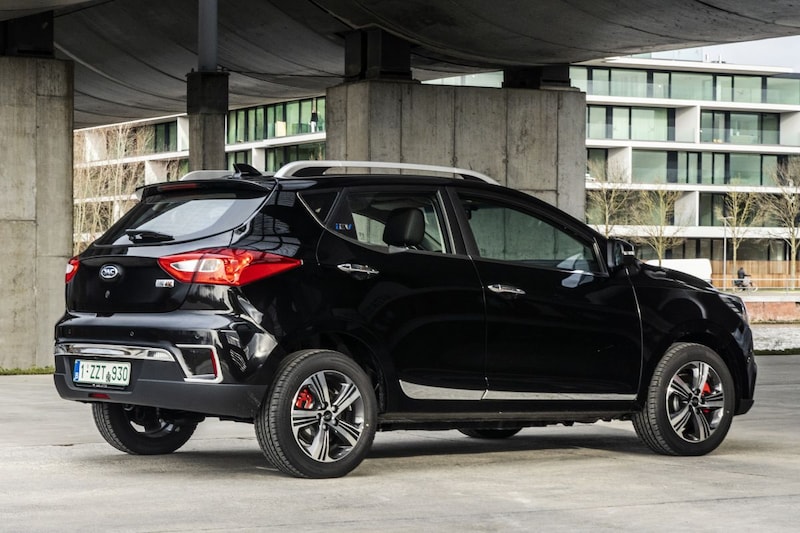
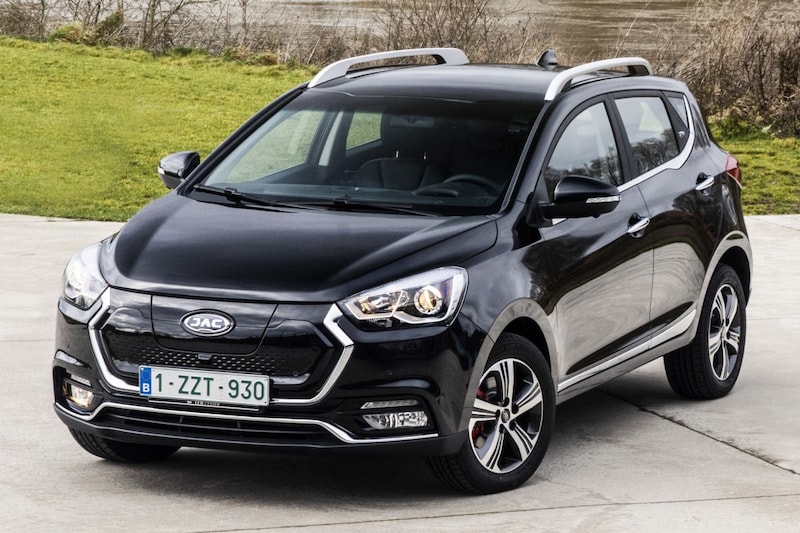
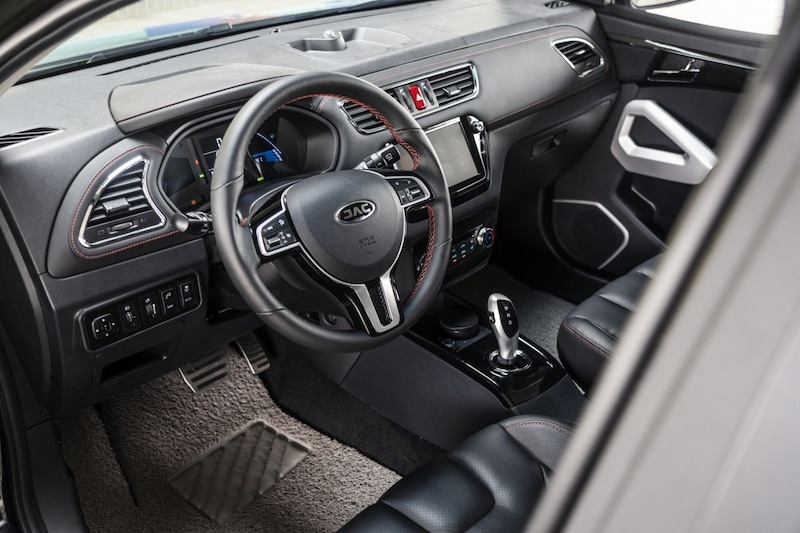
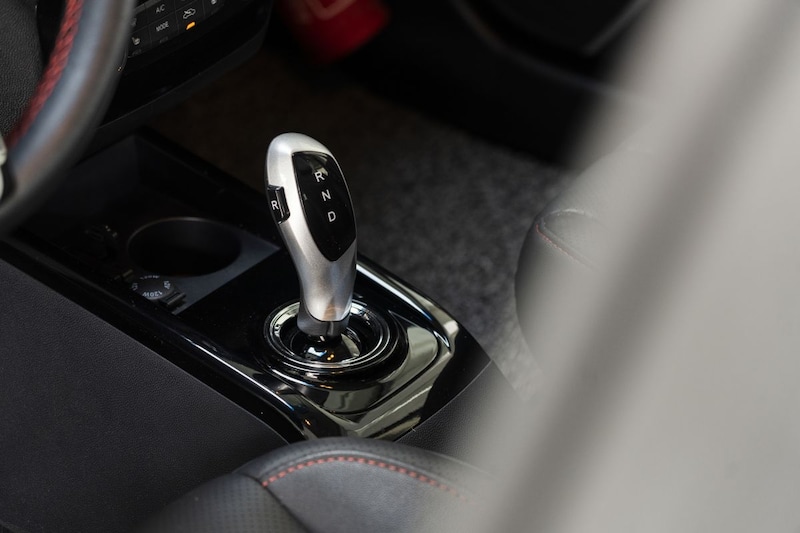
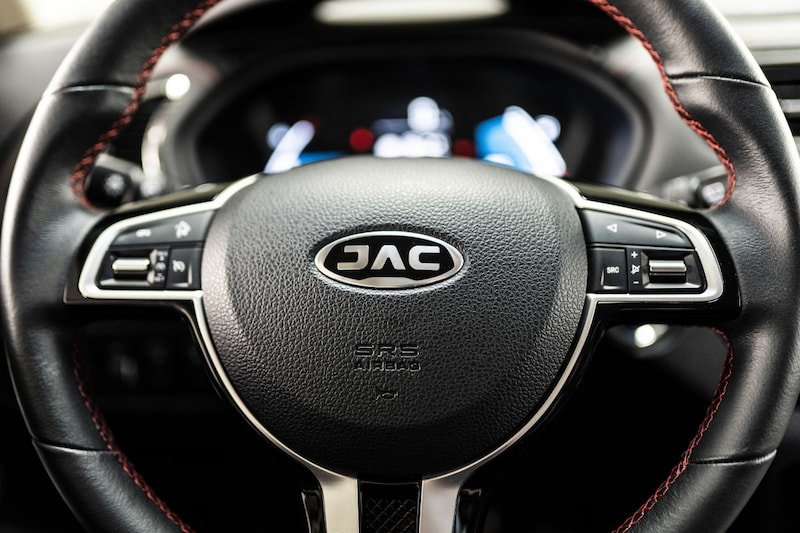
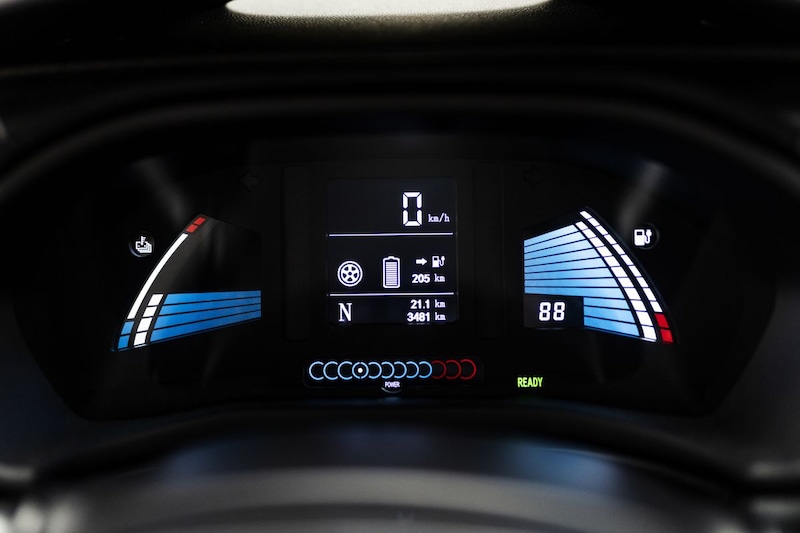
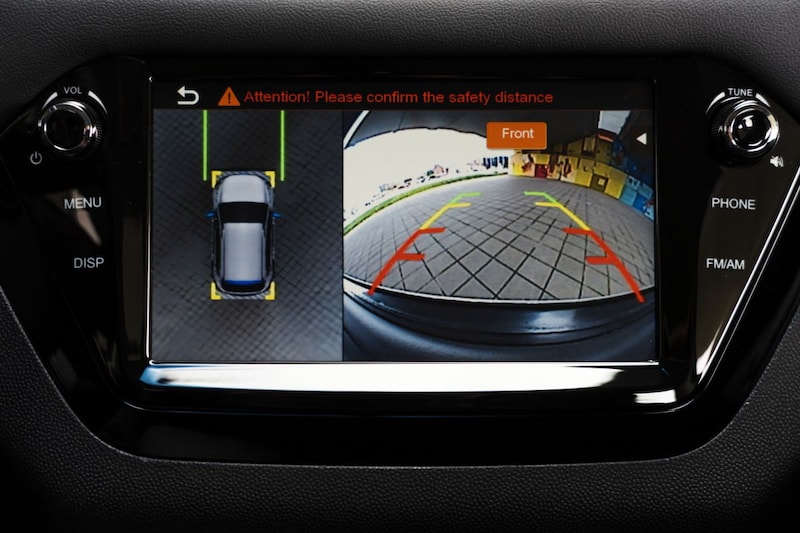
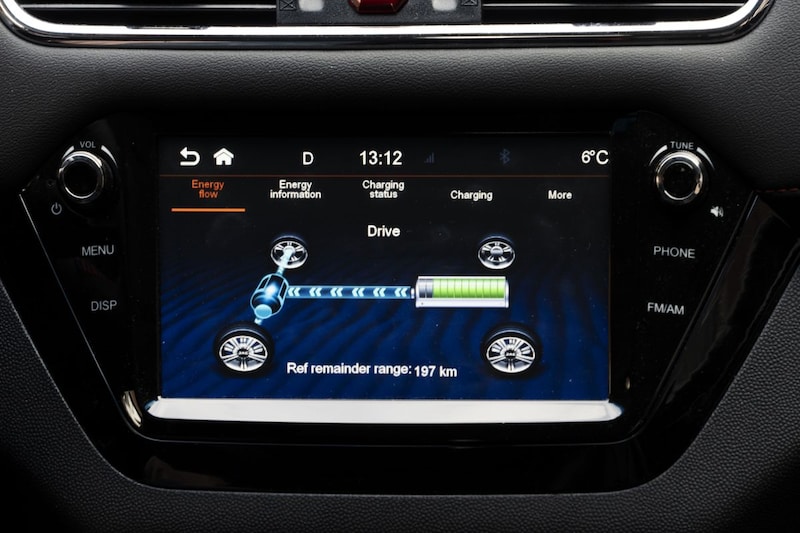

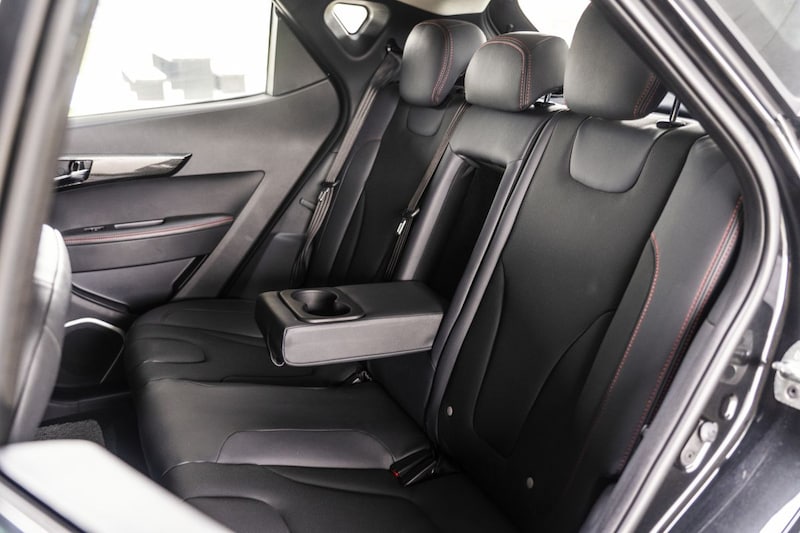
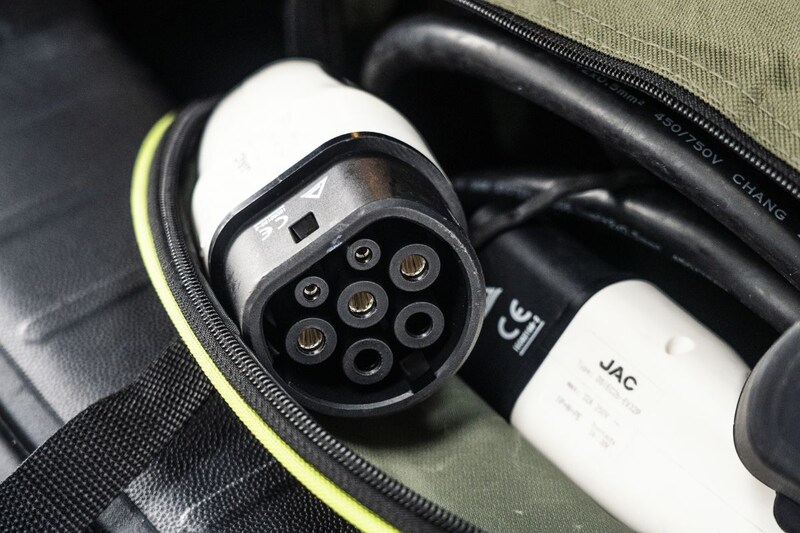

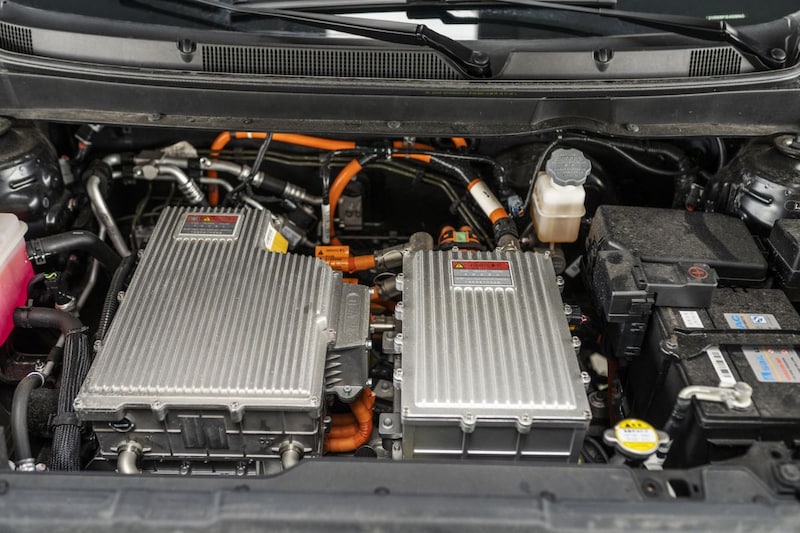

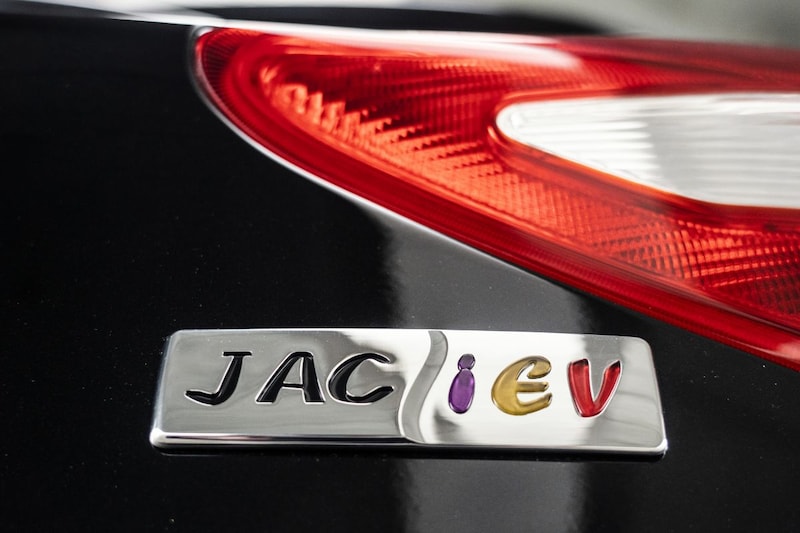
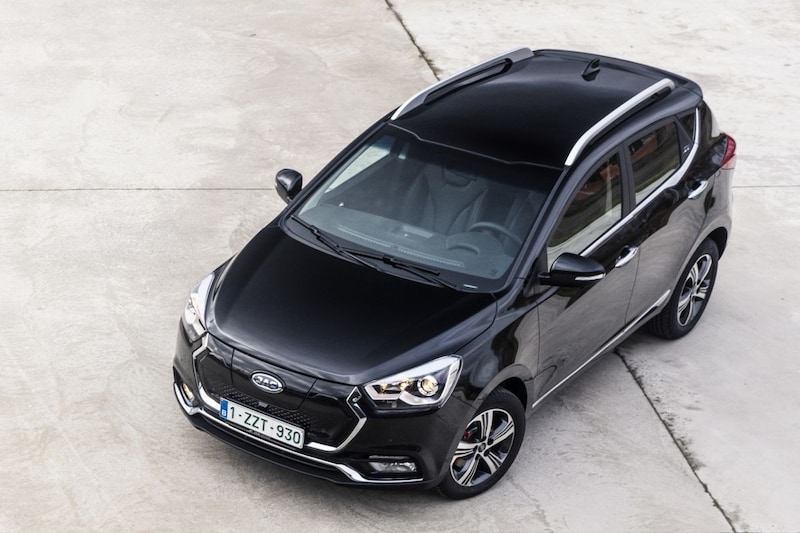
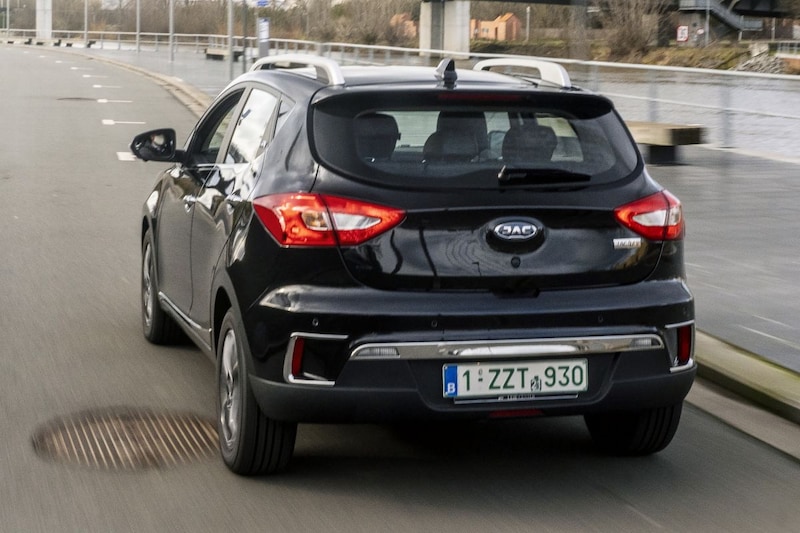
JAC comes with the iEV7s. An electric SUV. Other Chinese brands have proven on several occasions that they can screw together an EV that is to be feared with European input, but will they also succeed without the grab bags of Volvo, Volkswagen and BMW? The JAC iEV7s ventures its chance solo among the compact middle class.
There are no longer any certainties in life, except that the Chinese car manufacturers are increasingly getting involved in the European EV battle. Geely has been doing this under the Volvo flag for a while, MG uses a British emblem to avoid suspicion and BMW prefers to keep quiet that the iX3 is built by Brilliance Auto in China. At the other end of the spectrum are the straightforward EV brands that make no effort to hide their Chinese roots, such as Aiways and Seres, which are steadily expanding the range of electric passenger cars here too. The newest expat from China is being built by the state-owned JAC (pronounced as Jack in English) and goes by the name iEV7s, even if that designation will soon be simplified to ES2 to pave the way for the larger ES4.
The 80’s
At first glance, the iEV7s appears to be a direct competitor to the MG ZS EV. After all, both come from the People’s Republic of China, present themselves as compact crossovers and also exist in their homeland with conventional engines. However, if you look more closely at the specifications, you will notice that the JAC is half a size smaller than the MG, which translates into a 10 cm shorter wheelbase and a 15 cm more compact body. Samsung’s battery pack is also slightly smaller at 39 kWh, which means that the driving range is approximately 240 km, according to the importer. The drive is provided by an electric motor of 85 kW (114 hp), which must pull the iEV7s to 100 in 12 seconds and make a maximum speed of 132 km / h. Just enough to tap the national highway limit in the Netherlands after seven in the evening.
Inside, the JAC does not hide its origins. The plastics are, except for a soft insert against the dashboard, of the hard variety, while the pseudo-digital clock shop is reminiscent of the Audi Urquattro’s counters. The gear lever of the single reduction gearbox dates from exactly the same era and has something like a joystick from the 1980s. The graphics of the 8-inch infotainment screen with built-in 360-degree camera follow the same track, while the quality of the artificial leather and the fake carbon inlay the door panels is iffy. No, such a workplace doesn’t really make you happy, especially when you consider that it only contains four airbags (two front and two sideways in the front seats) and no active safety systems at all.

JAC iEV7s
City car
Although the driver’s seat has a height adjustment, you sit up earlier than in the iEV7s. Combine that with a wheelhouse that is not adjustable in depth and you get a somewhat compromised driving position. It also takes some getting used to using the gear lever, because you can only see on the screens whether the transmission is in D or in R. There is no P-position, so you have to put the box in neutral and apply the electronic parking brake to park. With that in mind, it is quite surprising that the JAC leaves almost no stitches along the way. The steering feel is light with a strong degree of self-centering, but you still place the iEV7s exactly where you want it. The damping is decent enough for a comfortable ride, while the electric motor is more powerful than you would expect from 114 hp.
So there is little to criticize about the driving dynamics at city speeds. Even the braking is well calibrated, which is sometimes different with some EVs. Towards 100 km / h the acceleration logically decreases, but the progress remains sufficient to safely merge on the highway. There you notice that the straight-line stability can be better, while the wind and driving noise noticeably increase. At the top of their game, every highway mile counts down to two, but most EVs do in winter conditions. The Benelux importer has been smart enough to exchange the Chinese standard tires (Giti’s Comfort 221) for a set of Michelins Primacy, which produce much less rolling noise. The intention is to provide all iEV7s sold in the Benelux with that upgrade, although negotiations are still ongoing. We were not able to verify during this first test whether the driving dynamics of this JAC can be maintained even during challenging maneuvers.
Digitized
Drive like us and you have to look for an outlet in the winter after roughly 180 kilometers. If that is one of the classic home-garden-and-kitchen type, you will be parked for 17.5 hours to recharge the batteries from 10 to 100 percent. On a 1-phase wallbox, the same exercise can be done in 7.5 to 12 hours, depending on whether 3.2 or 7.4 kW flows through the pipe. Surprisingly, with a Type 2 plug and 3-phase power, it doesn’t go faster, according to the importer’s tests. Finally, at a fast charging station, the power can be increased to a maximum of 60 kW, which again ensures a quasi-full battery in 40 minutes. For reference, the MG ZS EV can charge at 85 kW, while its batteries are 5.5 kWh larger and the real range is rather 200 kilometers.

JAC iEV
We have not been able to determine exactly how much the iEV7s consumes according to the WLTP cycle. The brochure does not even differentiate between NEDC and WLTP values, while the actual consumption is not indicated anywhere. On the ‘on-board computer’ you only see how many kilometers you drive with each kWh, but that number is now 4 and then 7 without any difference in the driving conditions. Just to indicate that this JAC is not quite up to date with the digitization and all the features that go with it. There is, for example, no telephone application to view the charging status or to program charging times, just as you cannot check the preheating. Fortunately, a Bluetooth connection is available, just like a mirror version of Apple CarPlay. This allows you to see your phone’s apps on the touch screen, but not operate them.
At the price
If the JAC iEV7s were extremely competitively priced, we would condone most of the shortcomings. Unfortunately, he is not. Both in the Netherlands and in Belgium, the Chinese newcomer costs € 29,900, to which an additional € 450 in delivery costs are added for everything north of Breda. Agree, for that money you get an EV with (art) leather seats, cruise control and parking sensors with cameras all around, but it doesn’t feel as solid as the almost identically priced MG ZS EV, which has eagerly scrambled into the Volkswagen barrel. Moreover, for the same money there are also European EVs available that are a size smaller, but that often make better use of their interior space because the batteries are incorporated in the floor. With the JAC, the lithium-ion batteries are mainly located under the rear seat, which does not benefit the headroom in the rear. The larger ES4, which promises more interior space and driving range, has something to make up for in the course of 2021.